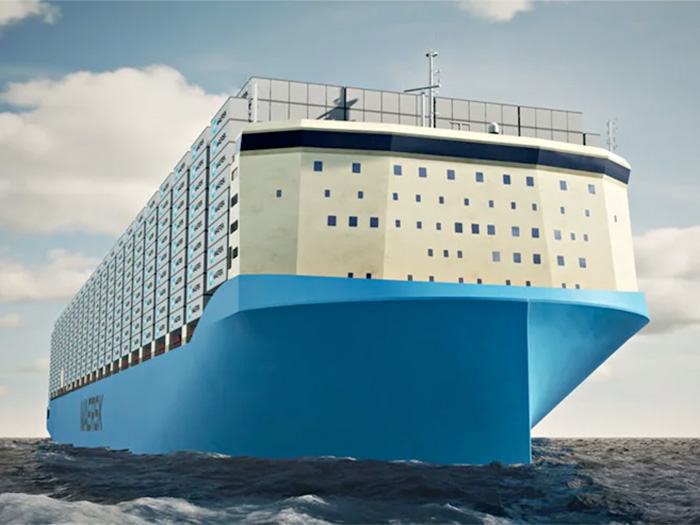
VIDEO: Maersk rethinks the containership
Written by Nick Blenkey
Maersk’s next generation containerships will require at-scale production of green methanol.
Maersk has taken the wraps off the design of its eight 16,000 TEU methanol-fueled containership newbuilds. And the decision to opt for methanol is just the start of the innovations they incorporate.
Maersk says that in designing the ships its ambition was to make sure the new vessels could service its customers in a smarter way while contributing to their carbon-neutral transportation goals.
It says the design allows a 20% improved energy efficiency per transported container, when comparing to the industry average for vessels in this size.
“Additionally, the entire series is expected to save around one million tons of annual CO2 emissions, offering our customers carbon-neutral transportation at scale on ocean trades,” says Palle Laursen, Chief Technical Officer, A.P. Moller – Maersk.
INSIDE THE VESSELS
The vessels will be 350 meters long, 53.5 meters wide and will look significantly different from what has been seen before in any larger container vessels. The crew accommodations and bridge will be located at the bow to enable increased container capacity. The exhaust stack will be in the aft, and only on one side of the vessel, providing further space for cargo. The separation between accommodations and stack will also improve efficiency when in port, says Laursen.
“The making of this took nearly five years, and all while crossing uncharted naval design territory,” says Laursen. “To enable this new design, several challenges had to be addressed. Firstly, crew comfort had to be ensured with the accommodations placed in this more exposed location. Moreover, adequate hull strength was also a key parameter to safeguard, with the accommodation block normally working as a hull ‘stiffener’ when placed further aft. New arrangements for lifeboats and navigational lights had to be developed, plus new cameras to support the captain’s view when navigating.”
The series, built by Hyundai Heavy Industries, features an innovative dual-fuel engine setup that can operate on methanol and conventional low-sulfur fuel. With fuel capacity, the vessels will be able to complete an entire round-trip, for example.
The first vessel is scheduled to be in operation at the beginning of 2024.




